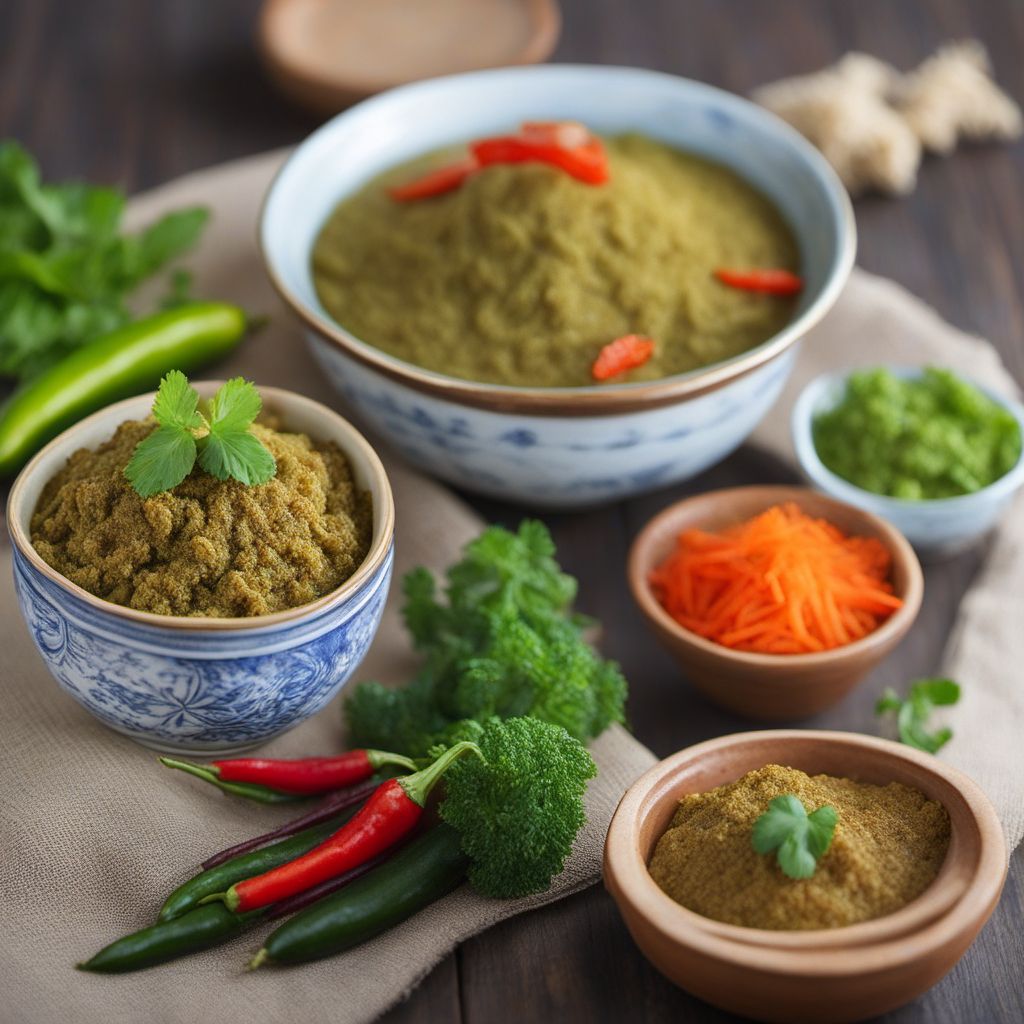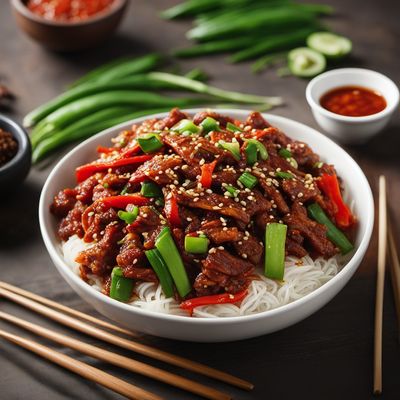
Recipe
Sikkimese-style Oiseon with Local Flavors
Himalayan Delight: Sikkimese Oiseon Infused with Local Spices
4.6 out of 5
Indulge in the flavors of Sikkim with this delightful twist on the traditional Korean dish, Oiseon. This recipe combines the essence of Sikkimese cuisine with the crispy and savory goodness of Oiseon, resulting in a unique and mouthwatering culinary experience.
Metadata
Preparation time
20 minutes
Cooking time
10 minutes
Total time
30 minutes
Yields
4 servings
Preparation difficulty
Easy
Suitable for
Vegetarian, Vegan, Gluten-free, Dairy-free, Nut-free
Allergens
Wheat (gluten)
Not suitable for
Paleo, Keto, Low-carb, High-protein, Atkins
Ingredients
In this Sikkimese adaptation of Oiseon, we incorporate local Sikkimese spices like Sikkim cardamom and Sikkim pepper to infuse the dish with a distinct Himalayan flavor. Additionally, we use locally available vegetables such as zucchini, carrots, and bell peppers to add a touch of freshness and vibrancy to the dish. We alse have the original recipe for Oiseon, so you can check it out.
-
1 zucchini, thinly sliced 1 zucchini, thinly sliced
-
1 carrot, thinly sliced 1 carrot, thinly sliced
-
1 bell pepper, thinly sliced 1 bell pepper, thinly sliced
-
1 cup all-purpose flour (120g) 1 cup all-purpose flour (120g)
-
1/2 cup rice flour (60g) 1/2 cup rice flour (60g)
-
1 teaspoon Sikkim cardamom powder 1 teaspoon Sikkim cardamom powder
-
1/2 teaspoon Sikkim pepper powder 1/2 teaspoon Sikkim pepper powder
-
1/2 teaspoon salt 1/2 teaspoon salt
-
1 cup cold water (240ml) 1 cup cold water (240ml)
-
Vegetable oil, for frying Vegetable oil, for frying
Nutrition
- Calories (kcal / KJ): 180 kcal / 753 KJ
- Fat (total, saturated): 2g, 0g
- Carbohydrates (total, sugars): 38g, 2g
- Protein: 4g
- Fiber: 3g
- Salt: 0.5g
Preparation
-
1.In a mixing bowl, combine the all-purpose flour, rice flour, Sikkim cardamom powder, Sikkim pepper powder, and salt.
-
2.Gradually add cold water to the dry ingredients while whisking until a smooth batter is formed.
-
3.Heat vegetable oil in a deep pan or wok over medium heat.
-
4.Dip the sliced vegetables into the batter, ensuring they are evenly coated.
-
5.Carefully place the coated vegetables into the hot oil and fry until golden brown and crispy.
-
6.Remove the fried vegetables from the oil and place them on a paper towel-lined plate to drain excess oil.
-
7.Serve the Sikkimese-style Oiseon hot and crispy as an appetizer or side dish.
Treat your ingredients with care...
- Zucchini — Make sure to slice the zucchini thinly to ensure even cooking and a crispy texture.
- Sikkim cardamom — Use freshly ground Sikkim cardamom powder for the best flavor.
- Sikkim pepper — Adjust the amount of Sikkim pepper according to your spice preference.
Tips & Tricks
- For extra crispiness, you can double-coat the vegetables by dipping them in the batter twice.
- Serve the Sikkimese-style Oiseon with a tangy dipping sauce made from local Sikkimese ingredients like tamarind and chili.
- Experiment with different vegetables such as thinly sliced potatoes or mushrooms for a variety of flavors and textures.
- To reduce oil absorption, make sure the oil is hot enough before frying the vegetables.
- Sprinkle some freshly ground Sikkim pepper on top of the fried Oiseon for an added burst of flavor.
Serving advice
Serve the Sikkimese-style Oiseon as an appetizer or side dish alongside a main course. Garnish with fresh herbs like cilantro or mint for a pop of color and freshness.
Presentation advice
Arrange the crispy Oiseon on a platter, creating an appealing display of colors and textures. Serve with the dipping sauce on the side for guests to enjoy.
More recipes...
For Korean cuisine » Browse all
More Korean cuisine dishes » Browse all

Seolleongtang
Ox bone soup
Seolleongtang is a traditional Korean soup made from ox bones, brisket and other cuts. It is a hearty and comforting dish that is often enjoyed...

Songpyeon
Songpyeon is a traditional Korean rice cake that is typically filled with sweet or savory ingredients. It is a popular dish during the Korean...

Boribap
Barley rice
Boribap is a traditional Korean dish made with rice, vegetables, and meat. It is a type of bibimbap that is served in a hot stone bowl.










